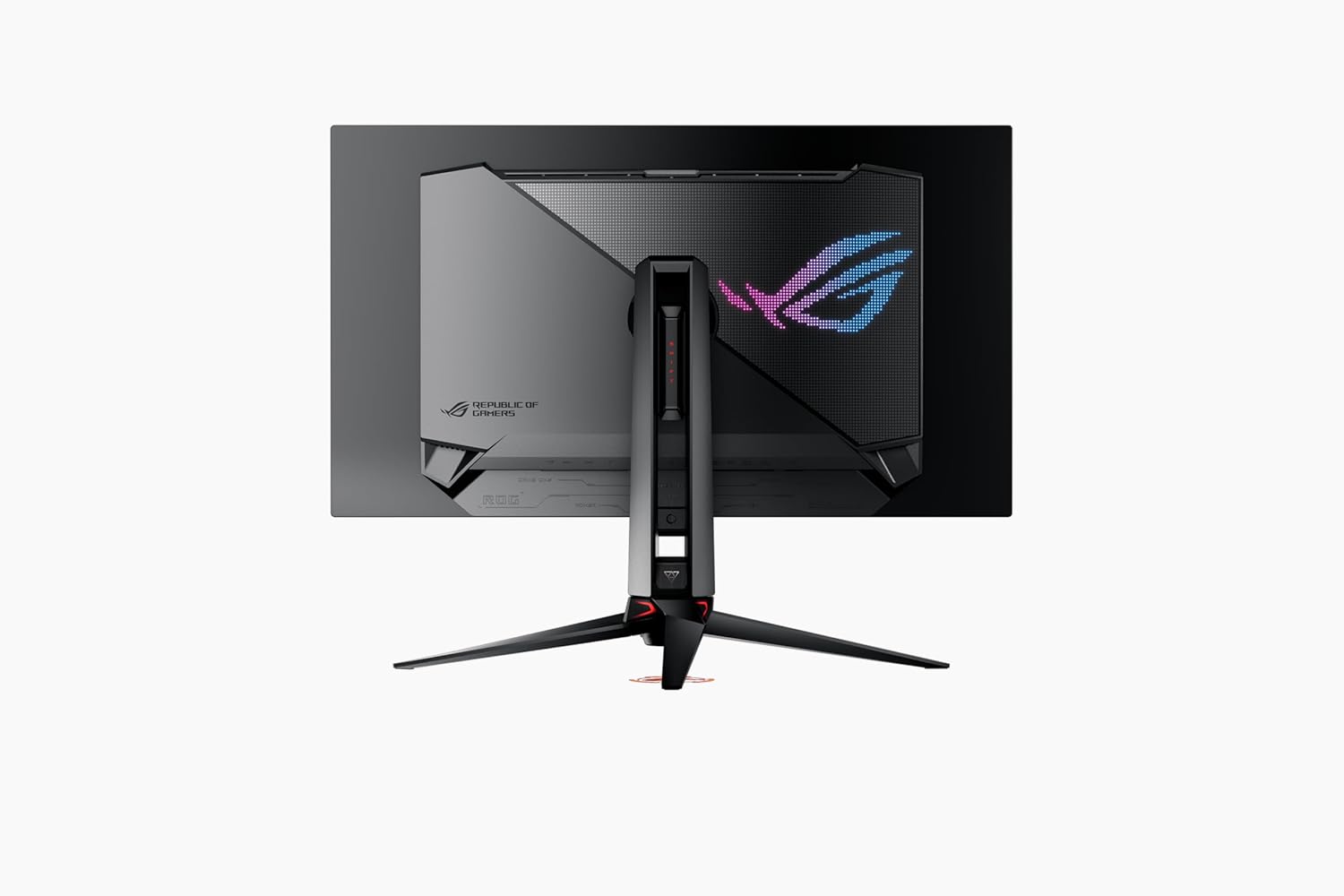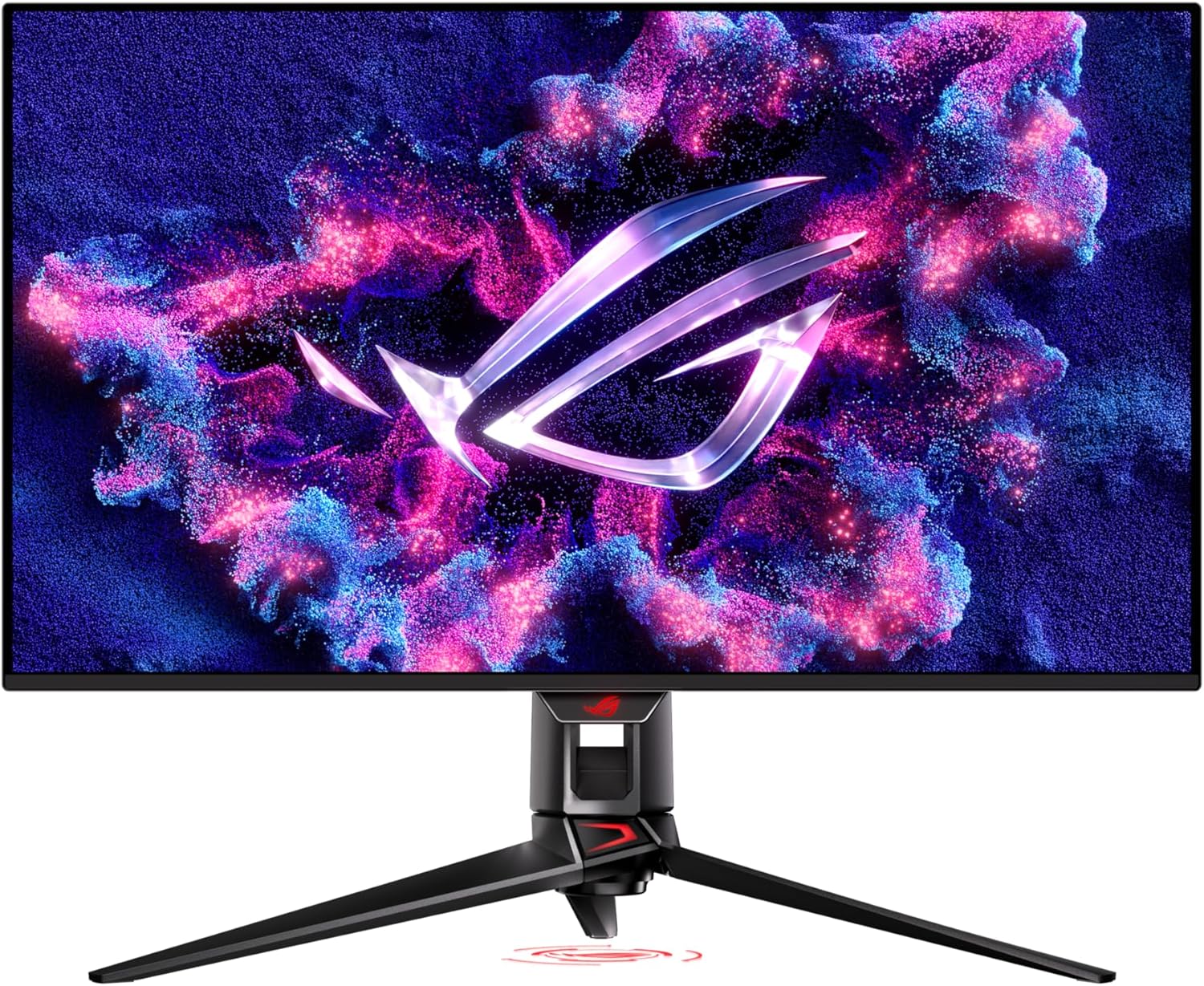Best monitors for RTX 5090 in 2025 – our top picks
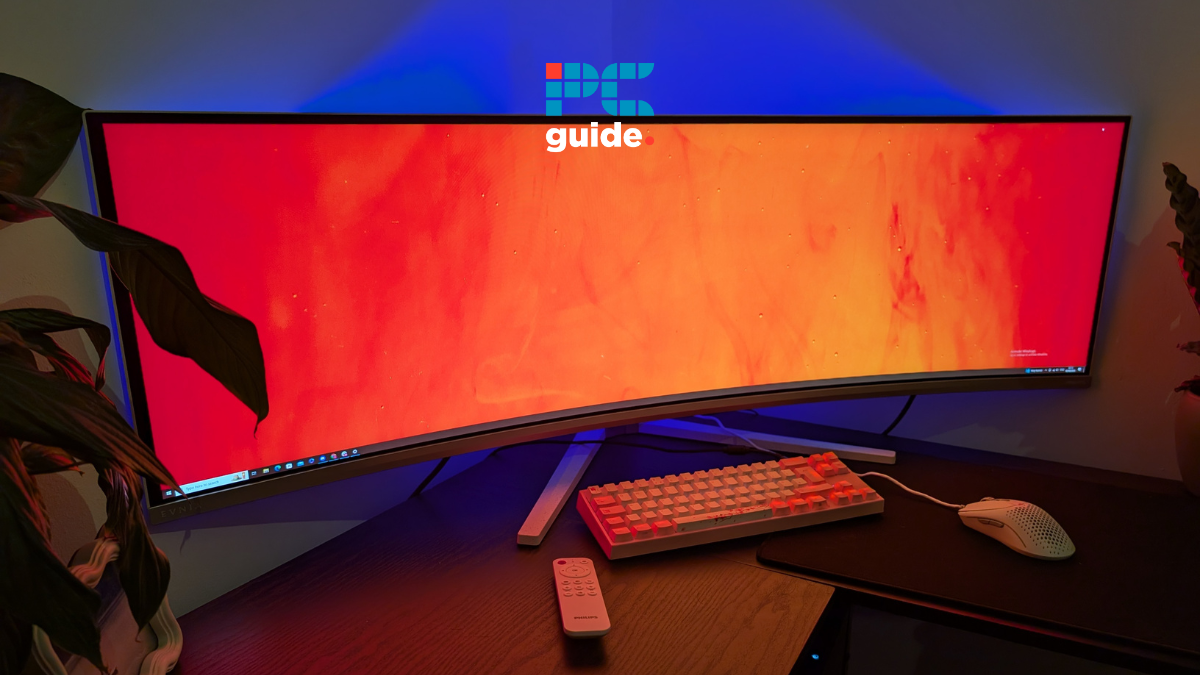
Table of Contents
The RTX 5090 is finally here, and if you’re anything like us, you’ll already be mapping out the best build for the card. While grabbing the best case, best CPU, even the best PSU for the card is important, all that goes to waste if you don’t have the right monitor to match.
So what monitor is compatible with the RTX 5090? Well, loads are technically compatible, but it comes down to personal preference. Generally speaking, if you’ve got the best GPU on the market, you’re likely going to be using it (at least some of the time) to play games at the highest possible settings. For that, you’ll need a monitor that’s OLED, 4K, and has a high enough refresh rate (over 120hz for sure, but perhaps even more).
That being said, you’ll also want something to game in 1440p at higher fps for more fast-paced titles, and the RTX 5090 is a powerhouse in that department, nerfing the previous 4090 when it comes to QHD gaming overall.
The good news is that many monitors are now catered to this multi-gaming usage, so you don’t really have to pick between 4K 120hz or 1440p 240hz plus. All you have to do is consider your budget, the size of the screen, whether you want ultrawide, and even the aesthetics of the monitor itself, and if they’re to your liking.
Personally, if budget is no issue, I’d go for a 32″ OLED 4K model (maybe 27″-28″ if the majority of your time is spent playing competitively). If you’re sticking to a budget, I think the best bang for your buck will be a 1440p monitor with 240hz or more and a good HDR rating (DisplayHDR 400 or more).
If you’re using it for design, head to the Asus ProArt line for the very best; we’ve included one below to get you started.
Here are a few options that we’d say would work well with the RTX 5090, based on specs, features, and anything else that made them stand out from the crowd.
Products at a glance
-
Best monitor for the RTX 5090 overall
ASUS ROG Swift 32” 4K OLED Gaming Monitor (PG32UCDM)
- Panel type : QD-OLED panel
- Resolution: 3840 x 2160
- Refresh rate: 240Hz
- Response time: 0.03ms
- Panel size: 32″
-
Best QHD monitor for the RTX 5090
MSI MPG QD-OLED 27″ Gaming Monitor (271QRX)
- Panel type: QD-OLED panel
- Resolution: 2560 x 1440
- Refresh rate: 360Hz
- Response time: 0.03ms
- Panel size: 27″
-
Best ultrawide monitor for the RTX 5090
Philips Evnia 49M2C8900
- Panel size: 48.9 inch
- Refresh rate: 240Hz
- Response time: 0.03 ms
- Panel technology: QD-OLED
-
Best monitor for the RTX 5090 for creatives
ASUS ProArt 32” Display PA32UCX-PK
- Panel type: IPS
- Resolution: 3840×2160
- Refresh rate: 60Hz
- Response time: 5ms
- Panel size: 32”
How we picked
To select the best monitor for the RTX 5090, we looked at multiple options from various brands and filtered them based on the panel type, resolution, refresh rate, response time, panel size, and other important features. This gave us a list of monitors that should work well to showcase the 5090's potential.
We also review products such as CPUs, GPUs, laptops, motherboards, and others in-house. If you're interested in learning about how we select and review products, our testing lab has you covered.
Our top picks
- Panel type : QD-OLED panel
- Resolution: 3840 x 2160
- Refresh rate: 240Hz
- Response time: 0.03ms
- Panel size: 32″
- Excellent color range
- Great aesthetics
- Built-in KVM
- Costs over $1,000
- Needs to be calibrated for the best color accuracy
- There is some input lag
If you’re looking for the best monitor to use with the RTX 5090, we recommend you check out the ASUS ROG Swift 32″ 4K monitor (PC32UCDM). This gaming monitor offers has a 32″ QD-OLED panel, which offers deep black and vivid colors and is a sweet spot between ultrawide and smaller monitors.
It has enough screen real estate to promote efficiency and productivity and also provide an immersive gaming experience. What makes it even better is the built-in KVM, which allows you to connect it to different devices. So, you can use it with your RTX 5090 gaming PC or laptop and another device and switch between the two or split the screen.
That being said, it has a 240Hz refresh rate with a 0.03 ms response time, making it an excellent option for competitive and single-player gaming. The RTX 5090 should be able to churn out high frames in FPS games, as they aren’t as graphically demanding as story-based games. The 0.03 ms response time should ensure that your input or movements are displayed with minimal delay, keeping you on top of your game.
Besides that, it has a 3840 x 2160 resolution (4K) with a QD-OLED panel, meaning that in story-based games, which are all about serene visuals, you should have a pleasant experience as the details and textures should be in high-quality, showcasing the capabilities of the RTX 5090.
OLED monitors or TVs are prone to burn-in. What this means is that during extended periods of time, a snapshot of anything you’re watching or running is burned into the panel and is visible even if you’re working or playing anything else. So, to prevent it, this monitor has a custom heatsink to keep it cool and a graphene film for efficient heat dissipation.
A neat aspect of this monitor is that it supports different aspect ratios. So, you can choose between a 24.5″ or 27″ size if you’re competing in a tournament with specific monitor requirements. It also supports HDR10, which supports brightness of up to 1,000 nits, 10-bit color depth, and a wider color gamut. All of these aspects combined deliver a better visual experience, but turning it on for gaming isn’t recommended as not many games have a decent implementation of HDR, resulting in a negative impact during gaming.
Overall, this monitor has everything you’ll need to experience the RTX 5090, whether you’re working or gaming. It has plenty of connectivity options, like a USB-C port with 90W power delivery, which can charge your mobile or any other device. The stand allows it to swivel, tilt, and adjust its height. Besides that, there are in-game enhancements like a time, FPS counter, crosshair, sniper, and more.
What users say
According to Amazon reviews, this monitor has excellent color accuracy, response time, and contrast. One reviewer said: “My computer is running an RTX 4090 so I am utilizing VRR/G-sync and the response time feels perfect without any tearing, there is without a doubt a competitive advantage in gaming over my previous monitors. Night and day.”
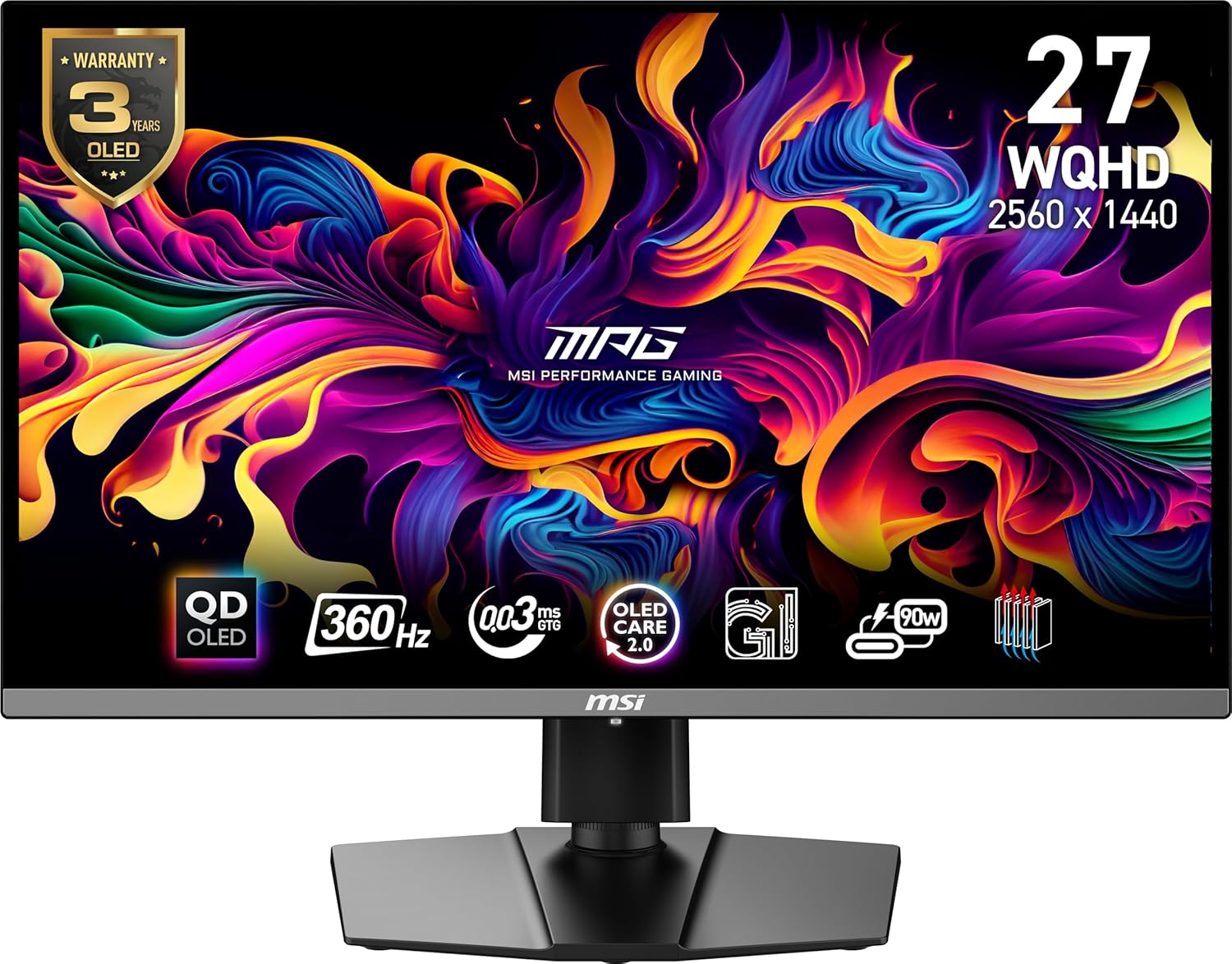
- Panel type: QD-OLED panel
- Resolution: 2560 x 1440
- Refresh rate: 360Hz
- Response time: 0.03ms
- Panel size: 27″
- It has a 360Hz refresh rate
- Very quick response time
- Excellent color range
- It is expensive
- The risk of burn-in
For those who play competitive games and want the highest FPS and lowest response time to gain an edge, we recommend pairing the RTX 5090 with the MSI MPG 271QRX gaming monitor. This monitor has a 2560 x 1440p resolution but has a QD-OLED panel with a 360Hz refresh rate.
What this means is that you should experience excellent color quality, brightness, and saturation. In addition, the 2K resolution means that games will run at that level, and it is easier for the GPU to render frames at a lower resolution than 4K. So, if you’re playing FPS games like COD, Battlefield, Counter-Strike 2, Valorant, Apex Legends, and more running at 1440p, the RTX 5090 should churn out a good number of frames, and this monitor’s 360Hz refresh rate should be able to display that without any issues easily.
The 0.03 ms response time means there will be a minimal delay between you performing an action and it being displayed on the monitor. However, the average response time is 250ms, so even 1ms is too short of a time frame for humans to comprehend or react to. So, such a low response time is mostly a marketing gimmick.
Regarding the connectivity options, this monitor has 2 x HDMI 2.1 ports, one DisplayPort 1.4, 2 x USB Type-A, one USB Type-B, and one USB Type-C. All of these ports can be used as an output; however, the USB Type-C port also has a 90W charging output, meaning you can use it charge different devices such as your mobile phone.
Gaming on this monitor should also be a great experience due to all of the features it brings to the table. We’re sure that the RTX 5090 can deliver a great performance, but features like AI vision, anti-reflection, and ClearMR 13000 make it even better. AI vision detects dark areas while you’re playing and brightens them to reveal hidden players or details. The anti-reflection coating on this monitor makes it a great option to use in bright rooms, as you won’t experience glare or reflections on your screen.
Overall, this monitor is full to the brim with features, and being an OLED monitor, it has OLED Care 2.0, which has pixel shifting, panel protection, and static screen detection to prevent burn-ins. There is also Taskbar detection, which lowers the light when it detects it, preventing burn-in. So, there are plenty of protective features to enhance your gaming experience.
What users say
According to Amazon reviews, this gaming monitor has excellent gaming performance, refresh rate, color quality, and motion clarity. One reviewer stated: “The MSI MPG 271QRX is a masterpiece for gaming enthusiasts, offering unparalleled performance and visuals. Its 27-inch QHD display paired with QD-OLED technology delivers vibrant, true-to-life colors, deep blacks, and outstanding contrast. With a blazing 360Hz refresh rate and a lightning-fast 0.03ms response time, it ensures ultra-smooth and responsive gameplay, perfect for competitive gamers.”
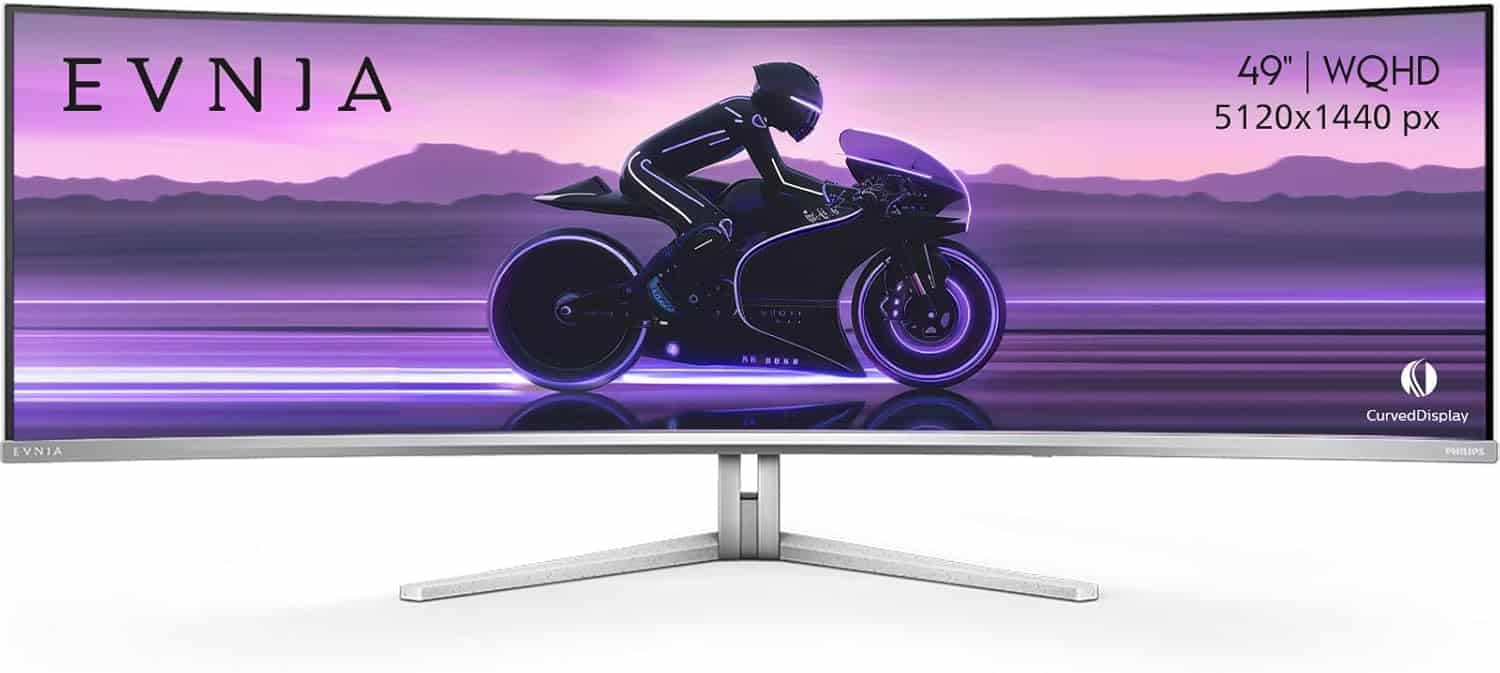

- Panel size: 48.9 inch
- Refresh rate: 240Hz
- Response time: 0.03 ms
- Panel technology: QD-OLED
- Viewing area: 1196.7 (H) x 339.2 (V) – at a 1800R curvature
- Display Screen coating: Anti-reflection, 2H
- Aspect Ratio: 32:9
- Contrast ratio: 1,500,000:1
- Pixel Pitch: 0.233 x 0.233 mm
- Viewing Angle: 178º (H)/178º (V); @ C/R > 10
- Display colours: Colour support 1.07 billion colours (10-bit)
- Scanning Frequency: 30 – 388 kHz (H) / 48 – 240 Hz (V)
- sRGB: Yes
- Picture enhancement: SmartImage game
- Pixel Density: 108.77 PPI
- Flicker-free: Yes
- LowBlue Mode: Yes
- EasyRead: Yes
- AMD FreeSync™ technology: Premium Pro
- Delta E: < 2 (sRGB)
- Maximum Resolution: 5120 x 1440 @ 240 Hz
- Low Input Lag: Yes
- Ambiglow: 3 sided
- G-SYNC: Compatible: 50 Hz ~ 240 Hz
- Pixel format: RGB Q-Stripe
- Brightness (nits): SDR: 250 (APL 100%) nit, HDR: 450 (APL 10%) nit, HDR E/P: 1000 (APL 3%)
- SmartContrast: Mega Infinity DCR
- Colour Gamut (typical): NTSC 127.4%*, sRGB 153.1%*, Adobe RGB 125.2%
- Colour Gamut (min.): DCI-P3: 99%
- HDR: DisplayHDR True Black 400 certified
- KVM: Yes
- USB Hub: USB version 3.2 Gen1 / 5 Gbps, USB-B upstream x 1, USB-A downstream x 4 (with 2 for fast charge B.C 1.2)
- Signal input: HDMI 2.1 x 2, DisplayPort 1.4 x 1, USB-C x 1 (DP Alt mode, Power Delivery)
- Sound Enhancement: DTS Sound
- Speaker Configuration: 7.5 W x 2 tweeters, 7.5 W x 2 woofers with flow port
- Height adjustment: 120 mm
- Tilt: -5/15 degree
- Swivel: -/+ 20 degree
- Good image quality with accurate colors
- Comes with a handheld remote
- It has great build quality and built-in speakers
- It comes with a hefty price tag
- There are accessible ports on the front
- Requires a good amount of space on the table
If you're looking for a high-performance monitor to experience everything the RTX 5090 has to offer, we recommend checking out the Philips Evnia 49M2C8900. This flagship ultrawide monitor features a 49-inch VA panel to deliver an immersive gaming experience. We've also reviewed it in-house and gave it a 4/5 rating.
This massive curved gaming monitor has a 5120 x 1440 resolution and a 240Hz refresh rate. To get the full 240Hz, in my experience with the Samsung Odyssey G9, you might have to use the USB Type-C input.
The 5120 x 1440 resolution isn't exactly 4K, but think of it as two 2K monitors side by side, which is plenty for any type of gaming. The RTX 5090 should be able to power this monitor by delivering good graphics and a high framerate.
However, a downside to this is the 32:9 aspect ratio, which many games don't support. So, you have to change the settings for each game to strike a good balance and ensure that the graphics aren't stretched out. That being said, it does feature a 1ms response time, which, coupled with the adaptive sync technology, should ensure smooth gameplay without screen tearing, stuttering, or motion blur.
You have to say that the Evnia 49M2C8900 is arguably one of the most attractive, value-for-money prospects in the 49-inch OLED range right now.
PC Guide
This monitor is excellent for content creators or other professionals who need to multitask or gamers who want to stream while gaming but don't want a multi-monitor setup. So, this is excellent for productivity, as you can open different charts, graphs, and windows without feeling like you are running out of space.
The built-in USB-C hub with 90W power delivery adds versatility to your setup, allowing you to connect and charge your laptop while simultaneously transferring data and displaying content through a single cable.
It also includes two HDMI 2.1 and one DisplayPort 1.4 port; while the RTX 5090 features HDMI and DisplayPort 2.1b, there shouldn't be compatibility issues as they are backward compatible, and overhead for more bandwidth should open up more options for future upgrades.
Overall, this is a great monitor with a QD-OLED panel, meaning you'll get excellent color quality and up to 90% color coverage. The OQ-OLED panel should also reduce reflections and glare if you sit opposite a window, resulting in a more comfortable working and gaming experience.
Also, being paired with an RTX 5090, you wouldn't have to worry about the GPU being underpowered to display anything on a 49” monitor, as it is set to replace the RTX 4090 as the most powerful GPU.
What users say
According to Amazon reviews, this monitor has excellent color accuracy, gaming performance, and sound quality. One reviewer said: “This monitor replaces an old Samsung G9 and it's literal night and day. The visual quality is great, built in speakers are good enough and the connectivity is superb. Firmware is adequate too.”

- Panel type: IPS
- Resolution: 3840×2160
- Refresh rate: 60Hz
- Response time: 5ms
- Panel size: 32”
- Exceptional image quality
- Excellent color accuracy
- Wide range of color calibration
- Not for gaming as it only has a 60Hz refresh rate
- 5ms response time
- It comes with a very hefty price tag
While the RTX 5090 is a powerful GPU that can deliver good 4K gaming results, it is also an excellent option for professional workflows like rendering and editing. So, for these tasks, a high FPS monitor isn’t the requirement, but a monitor with great color accuracy that supports a wide color gamut.
So, if you’re a content creator or work in any creative field, we recommend the ASUS ProArt PA32UCX-PK. This monitor has a 99% DCI-P3, 100% Rec. 709, and 89% Rec. 2020 coverage. This means that you’ve got plenty of coverage for HD and UHD images and videos with Rec. 709 and 2020, respectively.
This monitor has a 32″ IPS panel with mini-LED backlights that can give it a peak brightness of 1,200, meaning no dull visuals and you can create or edit any image, video, or graphics with full confidence in the color accuracy. If you’re working in a team with frequent in-person collaboration, this monitor features the ASUS Off-Axis Contrast Optimization (OCO). What this does is add a layer to the panel that allows people to view anything from the side without distorting the color.
This can greatly impact productivity as you can ask your colleagues for their opinion or show them what you’ve made without having to turn the monitor or them moving to get a clear picture. That being said, the ASUS ProArt Hardware Calibration offers complete control of how you want to calibrate this monitor depending on what you’re working on, which is great as you’re in total control of the output.
You can also adjust this monitor in any way you want in your setup. Its height can be adjusted, and it also has a swivel, tilt, and pivot feature. It also has plenty of connectivity options: three HDMI 2.0b ports, one DisplayPort 1.2, two Thunderbolt 3 USB-C ports, three USB-A ports, and an earphone jack.
So, you can connect multiple peripherals with this monitor, such as an external SSD and the USB-C port has a 60W power delivery but can be used to connect another monitor. Overall, this is an excellent monitor to pair with the RTX 5090 for creative purposes, as it has great features, color accuracy, and plenty of I/O. The only downside to this monitor is that it is very expensive and there are cheaper alternatives than this in the market.
What users say
According to Amazon reviews, the display quality, value for money, color accuracy, and screen size of this monitor are all top-notch. One reviewer said: “it is nice to know that the colors I see on the screen are what the colors are supposed to look like (if professionally done), and also see the color issues with home videos between different cameras – this thing (thus far), is like a rock!”
How to choose the best monitor for RTX 5090
There are a handful of factors that you need to consider while selecting a monitor. We've listed a couple of them to help you make an informed decision.
Resolution and refresh rate
The first factor you need to consider is the resolution and refresh rate. If you're getting an RTX 5090, you most likely want to target the 4K resolution, but it should also be able to push solid frames at 2K in competitive games. Playing games at 1080p with a 5090 would be overkill; however, remember that the higher you go in resolution, the more it'll cost.
Besides that, look at a monitor’s refresh rate, as that'll determine how smooth an experience you'll get. For example, if you're playing single-player games, then a 4K 120Hz monitor should be more than enough, and honestly, even for shooting games.
However, for first-person shooters, people generally want a monitor with a high refresh rate, so you can reduce the resolution to 2K and choose a 165Hz or 240Hz refresh rate option. There are options with the same refresh rate available for 4K monitors; however, they can be extremely costly.
Panel Type
The cost of the monitor will also fluctuate depending on the panel type. There are three major panel types: IPS, VA, and TS. IPS panels have good colors and viewing angles but are comparatively not as responsive. However, that shouldn't be an issue unless you're a competitive player on a global stage and have less detail in the blacks.
The VA panel is the perfect mix of everything and offers great contrast, but it isn't as fast as a TN panel. This is perfect for those who want to enjoy the graphics of different titles, and a VA panel is mostly used in curved monitors.
The TN panel is the fastest panel type, with low response times and high refresh rates. The downside to this panel is that it doesn't have great viewing angles, and it is rare to see a TN panel with over a 1:1000 contrast. However, it offers good black details and is perfect for competitive players who want the most responsive gaming monitor. It isn't the best monitor for watching movies or videos, so remember that.
Budget
This is the most important factor to consider out of all of them. The higher you go in terms of panel type, resolution, and refresh rate, the more expensive a monitor will be. So, we recommend that you filter the options based on your budget. This will give you a list of all the monitors you can buy without overspending.
After that, you only have to select one or two options, check out their reviews, and make a purchase.

